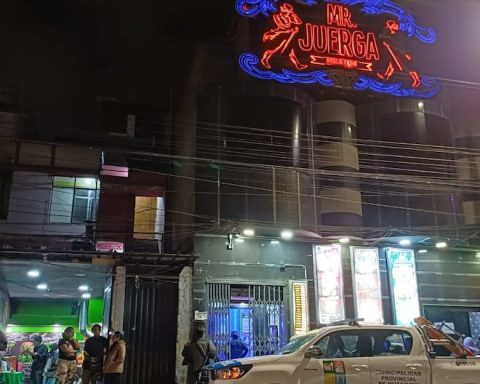(Technical Sheet: General Production: Lorena Vazquez – Sound Editing: Alejandro Sanz – Recording: Soledad Zunino)
San Martín was fundamentally a Hispanic-American, and he says so himself: “The revolution in the American lands is of the same nature as the Spanish revolution of 1808”, which was a revolution that liquidated the Inquisition and began to distribute land. It was to comply in one way or another with the fundamental principles of the French Revolution, which was later defeated. This also forces us to question the conception of the May Revolution, which was a democratic Revolution. In other words, the Viceroy was replaced by a popular board, but without having declared independence.
San Martín does not fight in San Lorenzo with the Argentine flag because Argentina did not exist. I consulted the Sanmartinian Institute, and they didn’t know what to tell me. “But the flag is necessary because in the middle of a battle it is the point where the forces of one side come together to be against the other and not confuse their enemies with friends.” Well, “you don’t know very well,” they told me.
Nor did they want to admit to me that Sergeant Cabral had been a slave, and that he was freed by his owner so that he could join the army of San Martín.
Beyond these small but significant details, the situation justifies that the Assembly of the year 13 did not declare Independence, and also explains why San Martín did not become a determined champion of Independence at that time from the moment in which the Spanish revolution falls defeated and the Inquisition is restored. The right wing is revived in Spain, the monarchy that persecutes the liberals -the good liberals of that time, not the liberals of today here in Argentina-, and So San Martín also supports Manuel Belgrano’s idea of the Inca monarchy.. In other words, if you have to establish a monarchy of “a king who reigns, but does not govern as a prime minister”, you cannot turn to Europe but to the original peoples.
Then one finds that Juan Butista Alberdi says “when I met San Martin I was surprised because I considered him an Indian, with a dark complexion, straight black hair, corpulent and I knew they called him ‘Yapeyu’s tape’”. They considered him mestizo, linked to his birth in the Guarani areas, and the little information that existed about him meant that when he arrived in the Río de la Plata they mistrusted him.because he spoke in a traditional tone and with Spanish proverbs.
This also explains why he does not fight in Peru. Because he has dialogues with the head of the forces that Spain had sent, who sent two fleets to recover the American lands after the Spanish revolution is defeated, not before. For this reason, the Spanish flag flies in the Fort of Buenos Aires until 1814: because independence has not been declared. The usual confusions of the boys between May 25 and July 9 are linked to this.
San Martín appears as a truly Hispanic-American figure, who could in no way have any grudge or animosity towards Simón Bolívar. as we were taught in school. Even in Venezuela too, because that is the formation of a culture that tends to make us not have a Latin American conception.
Delving into the investigation, it is found that San Martín, in exile, had three portraits of Bolívar. One of them was in his own bedroom, in front of his bed. In other words, when he woke up in the morning the first thing he saw was Bolívar, and when he went to bed at night, the last he saw was Bolívar. Only a masochist could self-inflict that suffering on someone who, assuming what Bartolomé Mitre’s version of the story says, would have stolen the glory of finishing the Latin American liberation campaign. He even corresponds with Bolívar after the Guayaquil meeting.
The truth is San Martín could not negotiate in any other way than as he negotiated with Bolívar, because he did not have any support from Bernardino Rivadavia in Buenos Aires.. He had to deliver his army to Bolívar and have the last grenadiers participate in the last liberation battles.
This explains the tremendous animosity of San Martin for Rivadavia. Bernardo O’Higgins tells him in a letter: “Rivadavia is the most ignoble person born in these lands”, and San Martín replies: “Yes, he put spies on me when I was in Mendoza, he is evil”. The Rivadavia newspapers, obviously, attack San Martín.
Within this recomposition of San Martín is also his conception, when he is already decidedly pro-independence, that the Battle of Obligado is very important. He maintains an exchange of 10 letters with Juan Manuel Rosas, which do not appear in the history of the biography written by Mitre, who explains to us how San Martín became a monarchist in 1819. He omits the dialogue between San Martín and Rosas, and also omits a interview between San Martín and Domingo Faustino Sarmiento, where Sarmiento speaks ill of Rosas and San Martin tells him that “it shouldn’t be so bad if he is in power”.
A story that they taught us at school is when one of San Martín’s granddaughters begins to cry and he gives her a medal, which they had given her in the battle of Bailén for her courageous and courageous behavior. Sarmiento being present, San Martín says “this is a demonstration of recognition for those who are willing to defend American lands.” It was a “pinprick” to Sarmiento against his position of support for the Argentine Commission that played with General Juan Lavalle, who had himself transported by French ships to finish off Rosas. It is worth clarifying here that Rosas had his limitations, such as a large rancher who is not a figure that one can totally ascribe to either, because with the distribution of land that took place during the time of Rosas, the landed oligarchy was consolidated, which Miter later deepened and finally became what it is today.
I think Saint Martin it must be considered fundamentally as a Hispanic American, within a historical conception that has to be Latin American. Because otherwise, thinking about the present, we cannot understand that, with what I hope is surely a victory for Lula in Brazil, we are facing a change in Latin America, with Mexico, with Colombia -unusually with a popular government after so much disasters and deaths-, with Chile and all its contradictions that they may have, and with what one hopes that the Argentine government can straighten itself out in some things. Although it would be substantial to add that saving Evo Morales’ life, as Alberto Fernández did even before taking office, fully justifies it from this Latin American perspective.
In that sense, I think San Martín’s claim is linked to sovereignty, it is linked to the Latin American union and it is linked to those attitudes that he took with a black cook, for example, that other men of his generation would have discriminated against, and with his conception initially linked to the fundamental principle in the French Revolution, although these were later distorted by the bourgeoisie and the development of Gallic capitalism losing the fundamental values of freedom, equality and fraternity that must be promoted and deepened in these moments of serious crisis in our country.


















